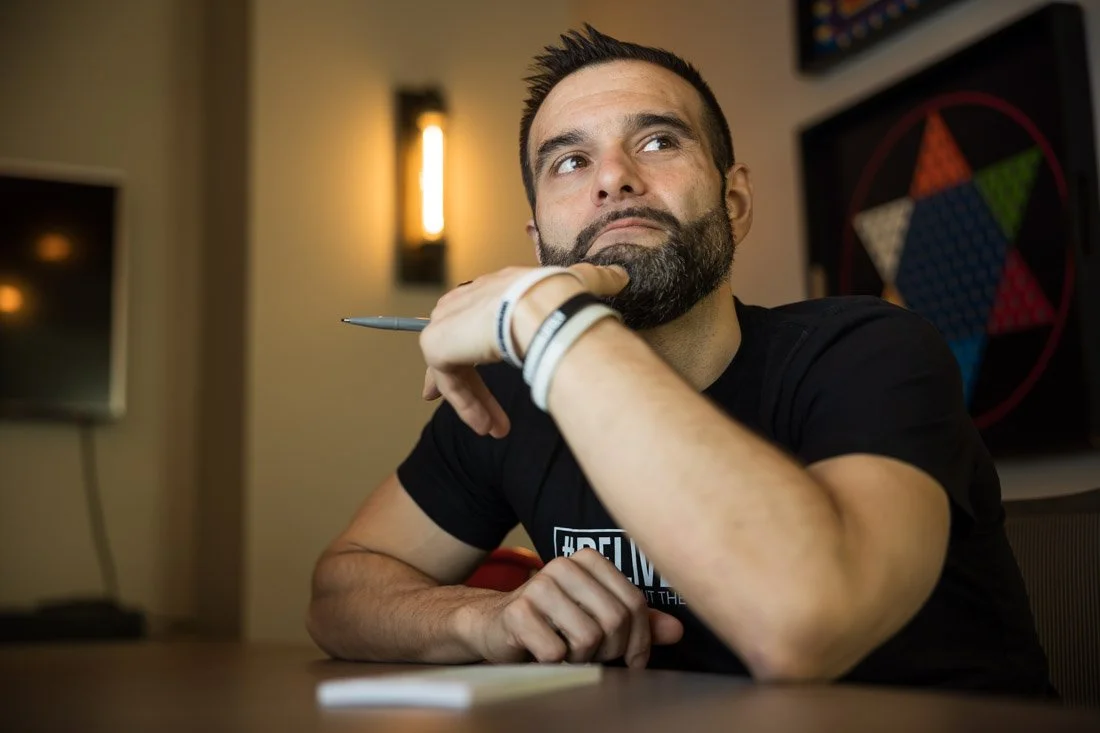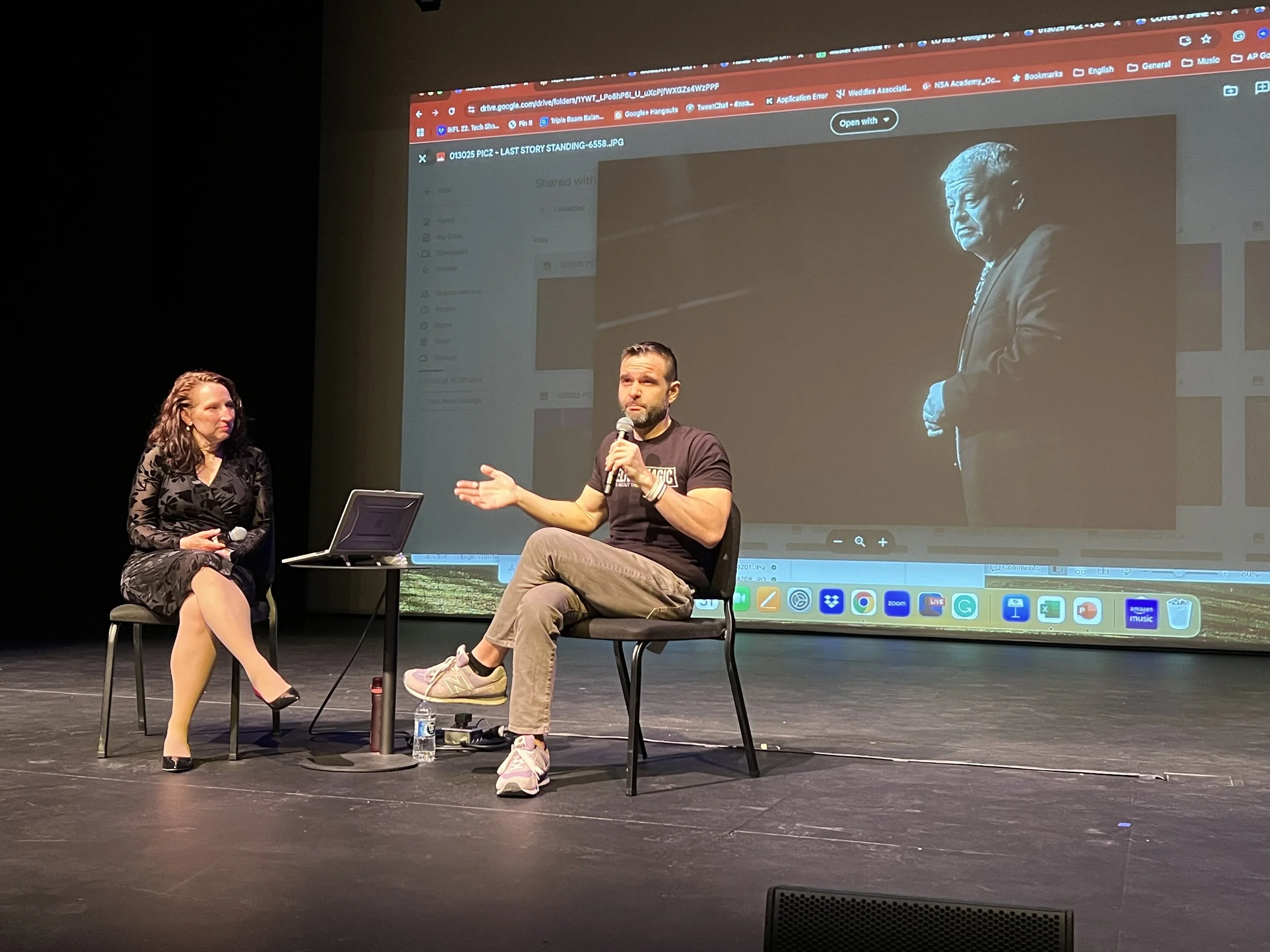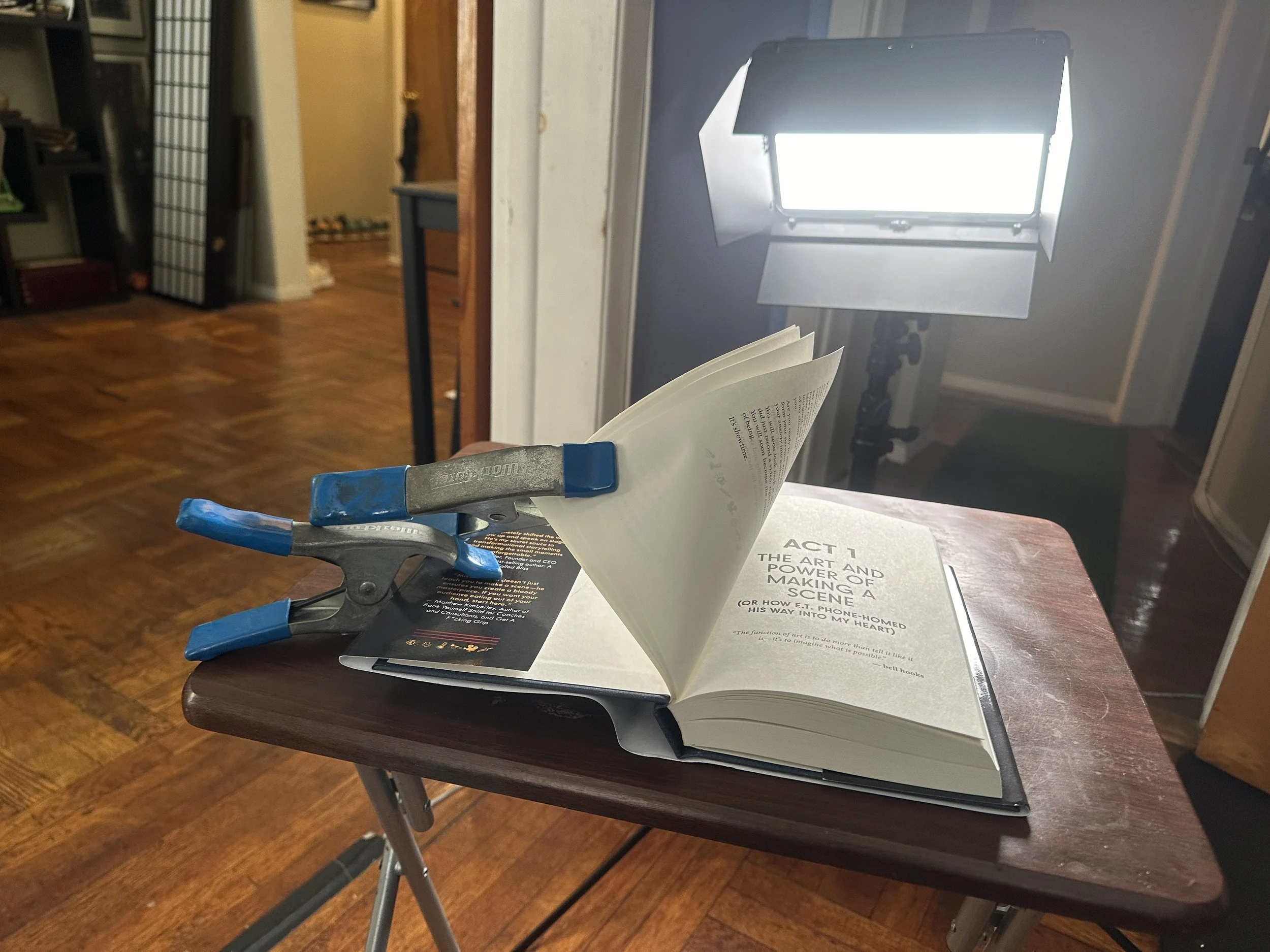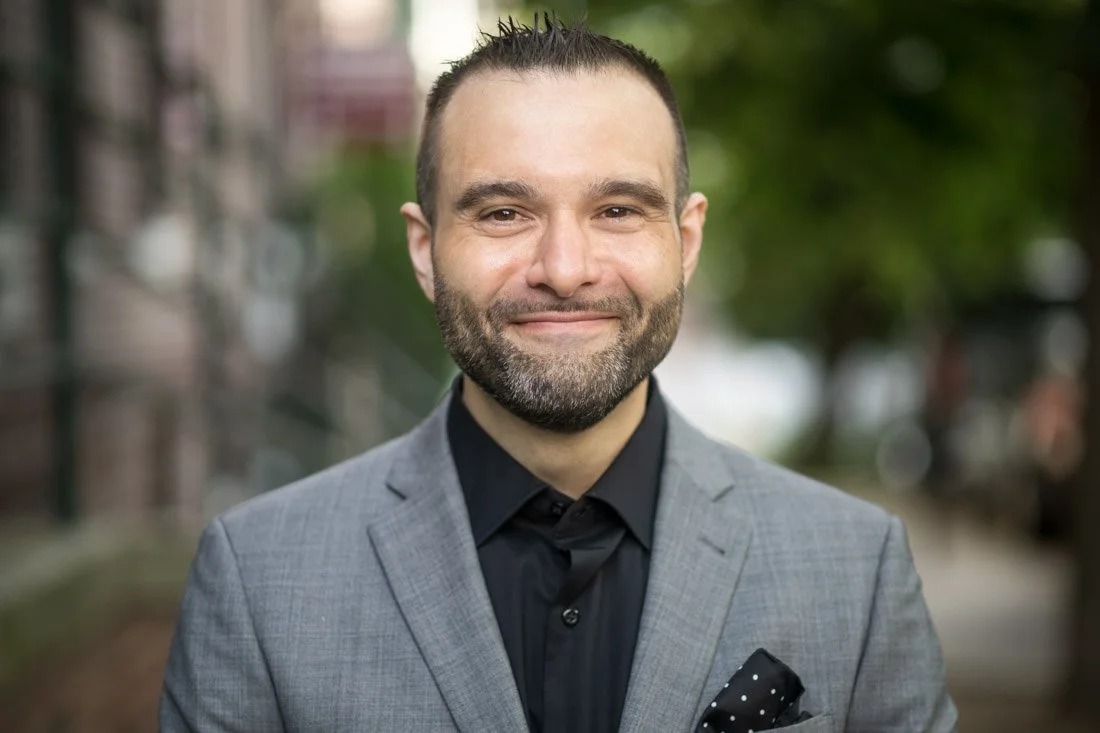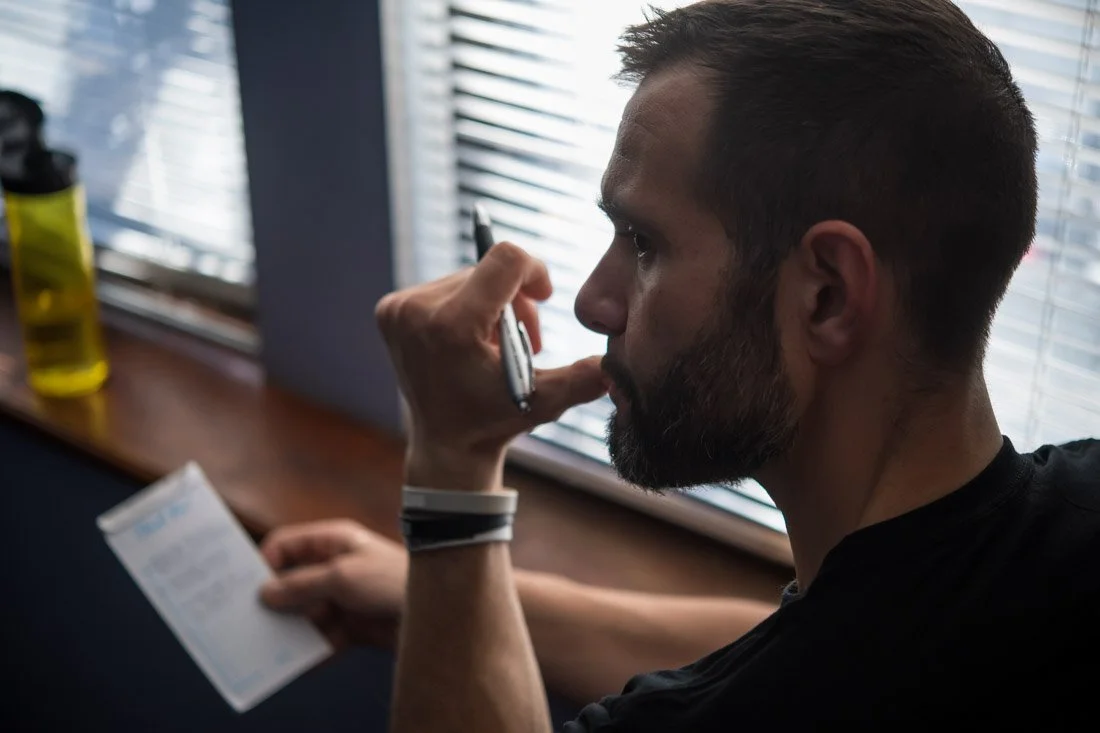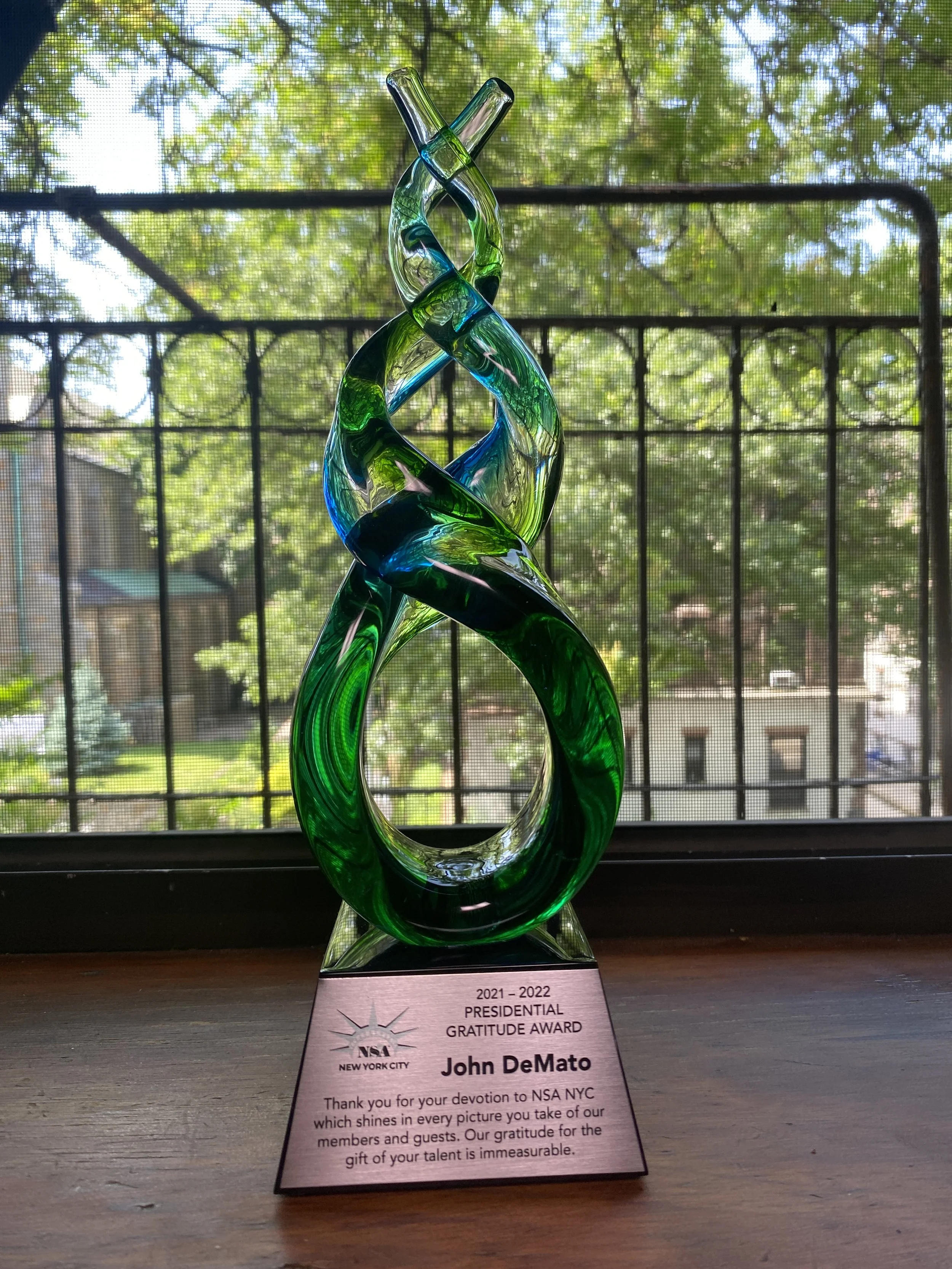Your Visual Content Needs Past, Present, and Future
A speaker I know recently got fired by one of the bureaus representing her.
Not for bombing a speech. Not for being a pain in the ass. Not for dropping the ball on commitments.
She got fired for being too successful without showing it.
Six months of solid bookings. Enviable Talk-A-Dot feedback. But zero photos from any events. The bureau wasn't happy she wasn’t promoting how she was crushing it.
The expert's problem was that she didn't understand the necessity of visual storytelling as an on-going, ever-evolving process that must be shared on a consistent basis…in multiple ways.
Most people who are the faces of their brand make the same mistake. They think visual content is a set it and forget it situation. Get professional photos once in a blue moon, use them everywhere for years, maybe post a random smartphone pic here and there when they remember.
But that's not how professionals who want to remain relevant and valuable long term operate.
Your visual story must evolve as you do. It needs to capture glimpses of your day-to-day life, demonstrate your current professional standing, and document your growing legacy - all happening simultaneously.
Miss any part of that evolution, and you end up blending into the noise online, and the people who could benefit from what you offer the world will never know you exist.
I mentioned that you achieve this in multiple ways. Well, there are three distinct timelines your visual content needs to serve…
The Three Timelines of Visual Storytelling
Real-time Smartphone Photos
Daily glimpses of the person behind the success, captured in moments, usually with your smartphone, allowing your audience to participate in your journey. This is where most people either overthink or completely ignore the opportunity.
Real-time content isn't about sharing the high-quality, professional photo of the moment, it's about being intentional about sharing your story in the moment it's happening. It's the visual proof that you're actively engaged in meaningful work, constantly growing, consistently showing up, and showing that you care.
For example, a Founder capturing the moment their team lands a major partnership and sharing the behind-the-scenes story of what that breakthrough means for their clients. Ideal for direct-to-social media the moment it's captured to keep them engaged with your world.
A consultant who shares a photo of their notebook filled with strategy notes before a client session. The CEO who takes a photo of his leadership team in a huddle session whiteboard solutions to a problem they're currently facing. The expert who snaps a picture of themselves and their notes in the green room before keynote.
These aren't polished marketing assets.
They're genuine glimpses into your process, your personality, your daily reality. The beauty of real-time content is that it ages naturally; nobody expects yesterday's smartphone photo to look professionally shot. They expect it to feel genuine and immediate. And it serves as a chronology of where you've been, what you've done, who you've served, and how.
Which ultimately compounds your credibility over time.
Current Professional Photos
These are the glossy, foundational photos that serve multiple purposes for experts and others who are the faces of their companies. And there's two types: promotional and lifestyle portraits.
Promotional images are the ones where you're looking straight into the camera - think tightly-cropped headshots and wider portraits that show more of your body. Lifestyle portraits are candid, re-created moments that capture you in the act of doing what you say you do - from the work before the work to the evolution and delivery of products and services, and everything in between.
These images showcase your essence, personality, current brand positioning, products and services you provide for your audience. These have a shelf-life, meaning they need to consistently be refreshed over time as you and your business evolve over time.
For experts who speak, coach, train, consult and write books, they're earmarked for websites, speaker kits, media interviews, slides, and a boatload of other marketing and promotional assets. For CEOs and company founders, they're ideal for company websites, investor presentations, media profiles, LinkedIn presence, hiring materials, and board communications. A financial advisor's current content might include a thoughtful portrait in their office and action shots of them presenting to clients. A tech company's current content could feature the founding team in their actual working environment and authentic shots of their development process.
This is where most people invest their time and money—and rightfully so, because current content does the heavy lifting across most marketing and business development activities.
But current doesn't mean permanent. These assets should reflect who you are and where your business stands right now, with enough quality and timeless appeal to serve you well for the next 6-12 months.
A good rule of thumb when thinking about where to use these visuals: if you have or plan to use an AI-generated photo or license a stock image for a project, use one of these instead.
Evergreen Visual Assets
Permanent evidence of your impact and legacy—timeless visual proof that compounds and doesn't expire. This is the timeline most people ignore entirely, and it's a massive missed opportunity. Evergreen content captures the permanent markers of your professional journey—the moments and achievements that compound in value over time.
For example, when you launch a book, when your company reaches significant milestones, when you receive meaningful recognition, when you're featured in major media. These moments, and others specific to you, become permanent parts of your professional story that reinforce your credibility in the eyes of your audience.
The challenge is that most people don't think to capture these moments strategically.
Either they don't have a professional photographer present, or are not aware, to capture them. Or, you simply were swept up, living in the moment, and forgot to take a picture of it with your phone. This has happened a million times to me!
Savvy experts, Founders, and CEOs anticipate these moments and ensure they're captured with intentionality, whether with a professional lens or on their own - or both. They understand that today's major milestone becomes next year's proof of track record, which becomes next decade's legacy content that can be leveraged as online content, website assets, email marketing materials, and other promotional and marketing needs that pop up over time.
When all three timelines work in concert, you don't just maintain a relevant online presence—you stand out across every channel and context where people encounter you.
Your Three-Timeline Strategy
Most professionals are operating on only one timeline, usually current content that's long past its due date, or haphazard real-time content without any intentionality behind it. Here's how to strategically build content across all three timelines:
Real-time Smartphone Strategy
The difference between experts and CEO's/Founders who build engaged audiences and those who don't isn't talent or value, it's that they don't realize the impact of sharing the here and now (like my colleague I mentioned earlier). You need a repeatable, consistent system that turns your daily professional reality into opportunities to connect more deeply with your audience.
Before any significant moment - a keynote, client meeting, training, mastermind, team huddle, industry event, etc. - ask yourself: "What's the story I want my audience to experience?" and "How do we make it relevant and valuable for them?"
For example, a management consultant heading into a strategy session with a Fortune 500 client. Sure, you could post the standard "heading to a client meeting" selfie. What if you took a more nuanced approach?
Capture the preparation ritual (reviewing notes, the calm before the storm), the environment (impressive corporate headquarters, the energy in the room), the work in action (whiteboard sessions, breakthrough moments), and the aftermath (team celebrating, handshakes, genuine reactions).
This isn't about creating award-winning photos. It's about producing genuine narrative arcs that let your audience feel like insiders to your journey. People don't just want to know you're successful; they want to understand how the sausage is made, which gives them more insight into how they would fit into your world.
The key piece? Assign someone on your team to own this process. Instruct them to act as a fly-on-the-wall with a camera. Their job is to chronicle the moments, and the moments between the moments that highlight your expertise, process, and impact.
Current Visual Asset Strategy
This goes far beyond hiring a good photographer.
You need someone who understands that they're not just taking pretty pictures; they're creating visual evidence of your professional identity that will work across dozens of contexts over multiple years.
And it all starts with a strategy call - no, not endless emails back and forth. A full-blown conversation with a litany of detailed questions that lays out what will be photographed, why it's important, and where they're eventually going to end up.
Audit every place you leverage image content: website, LinkedIn, speaker one-sheets, media kits, conference materials, sales presentations, hiring documents, board reports. Each context has different technical, aesthetic, and emotional requirements based on the copy it compliments.
For core assets, the goal is to position yourself visually as a leading authority in your space by leaning heavily into your essence and how you deliver the work. While there are 9000 other people and companies that offer what you're selling, there is only one you. It's important your current visual assets show them why you're a market of one.
For lifestyle shots, map out the work before the work scenarios that reveal your expertise in action. A lawyer strategizing with case files spread across a conference table. A Founder reviewing market data and growth metrics with their leadership team before a major pivot decision. A facilitator whiteboarding a contextual model.
These images show how you think, how you approach problems, and how you create transformation and value.
The photographer selection process must include reviewing their experience with professionals just like you in order to ensure they can deliver the technical quality needed for various projects from social media content to print materials.
Evergreen Strategy
This is where most professionals miss massive opportunities because they're focused on the moment rather than the long-term narrative value of what they're creating.
For achievement moments like book launches, award ceremonies, major speaking engagements, company milestones, capturing both smartphone documentation for immediate sharing and professional documentation for long-term marketing assets. These moments become more valuable over time, not less.
When you know that something big is about to happen, have the foresight to have it captured by yourself or someone on your team. Always plan in advance about how you can best chronicle these magic moments.
Today's professional milestone becomes tomorrow's credibility marker and next decade's legacy content. A keynote you deliver this year becomes proof of expertise when you're pitching a bigger stage next year, and becomes part of your professional legacy when you're being considered for board positions a decade from now based on your clear track record.
For physical evidence, like books, awards, certifications, patent documents, etc. - grab those during your branding session. These aren't just objects you hang up behind you during a Zoom call. They're tangible proof of your expertise and impact. Quality documentation of these achievements multiplies their marketing value across all your materials.
Ready to Build Your Three-Timeline Strategy?
Your visual story is more than a single snapshot in time. It's a dynamic narrative that spans your daily reality, your current professional position, and your evolving legacy.
When you align your visual content across these three timelines, you create something more powerful than just good photography; you create a compelling, genuine, and dynamic professional narrative that evolves with you.
If you're ready to develop a visual storytelling strategy that works across all three timelines and positions you as the unmistakable choice in your field, let's discuss how to capture your story as it unfolds. Book a Visual Storytelling Strategy Call.


